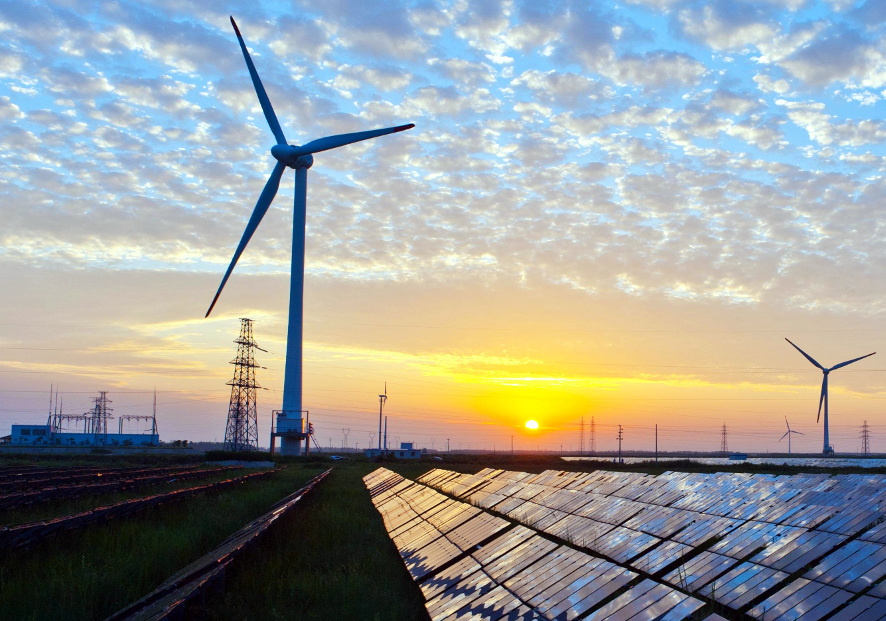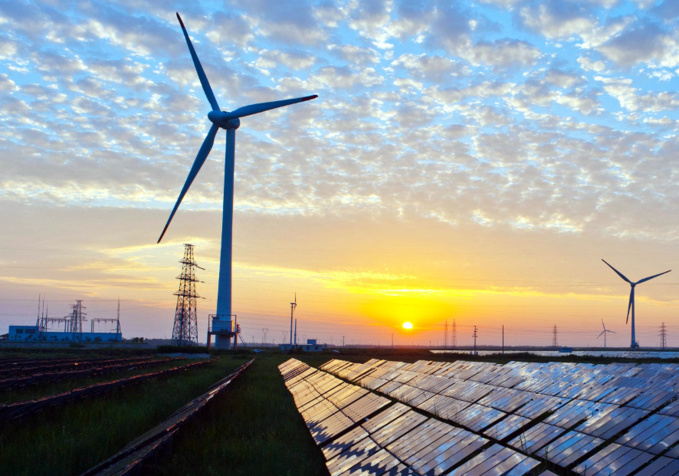Stadium Johan Cruijff ArenA in Amsterdam is equipped with solar panels and batteries to store energy. The system is able to accumulate energy to fully supply the ArenA stadium for one hour during large-scale events, that is, when energy consumption reaches its maximum.
This is not just another solar panels project, but an experiment of several large international companies. The idea is simple. Batteries in electric vehicles have a significant capacity and when their characteristics fall, they can still be used for other purposes. The system of the Amsterdam Arena uses elements from batteries of the electric car Nissan Leaf, which are subject to replacement upon reaching a run of 160,000 km or upon a decrease in capacity by 20%. Engineers decided that after that they are still good for storing energy in less severe conditions.
The entire project is designed for 10 years, which is exactly life of Nissan batteries. It is planned that for all this time it will be possible to reduce emissions of carbon dioxide into the atmosphere by 117,000 tons. The exact cost of the project for Amsterdam is not known, but the vice-mayor said that the city expects to recoup costs during these 10 years.
However, Nissan does not yet have an answer to the question of what to do with these batteries further. According to the company representatives, the technology for further utilization and/or application of these batteries is in the active development stage. But this is a key issue for the whole "green" energy sector: we can improve the ecology with the introduction of solar cells, but these batteries will still be based on lithium and cobalt.
These metals are contained in the human body, and in nature, but in micro doses. But their extraction and subsequent processing are causing serious problems as the elements may poison large areas.
Lithium is the lightest metal, the third element of the periodic table. It is used in the production of all batteries for modern mobile phones, portable computers and electric vehicles. If not properly used, lithium contained in the batteries can enter the atmosphere, spontaneously react with oxygen in the air and ignite.
The second problem is cobalt. Perhaps this is even more important material for renewable energy, although usually everyone only pays attention to lithium. There is less cobalt on the planet. Total estimated volume reaches about 7 million tons, and it is more difficult to extract. It’s hard to find cobalt in its in pure form, and all deposits contain it in the form of impurities to copper, nickel, arsenic or silver. To date, 63% of this metal is mined in the Democratic Republic of the Congo. The miners use child labor, which creates ethical problems for battery consumers.
According to the International Energy Agency, by 2040 the number of electric vehicles in the world will grow to about 40 million. Givan that an electric vehicle battery requires about 20 kg of cobalt, this sphere alone will consume 800,000 tons of the metal. And it is hard to even approximately imagine how much cobalt the smartphones and other computer technology will take.
The situation can only worsen in the future, not only from the ecological, but also from the economical point of view. Therefore, scientists around the world are trying to offer an alternative. There are both non-accumulative ways of storing energy. For example, lifting bags, water pumping or new types of batteries. Still, all of them are being developed, and most of them also use lithium.
Hydrogen engines are one of the "green" alternatives to the batteries. Using the sun energy and divide the water into oxygen and hydrogen, their only exhaust is water. However, this technology is still too expensive and not effective enough.
At present, acid and alkaline batteries can serve as alternatives, but they are not technological and even less environmentally friendly: they have a much smaller resource and energy density, and thus larger dimensions and weight. Some types of non-lithium batteries are leaky and require maintenance or have a long charging time, require special equipment for battery rooms. Such batteries have several times less service life and often contain heavy metals (including cobalt). Another element of the future batteries can be nickel: there is more of this metal on the planet (world reserves are estimated at 300 million tons), and it is (yet) cheaper ($ 12,600 per ton).
The creators of the Amsterdam Arena expect that when the batteries from the energy storage system live out their 10 years, simpler and safer recycling technologies will already appear. Yet, it is difficult to predict whether it will be possible to "recharge" these batteries or reuse their constituent metals. Still, we can expect that mass distribution of products with lithium current sources will someday result in their efficient processing or economically more profitable energy storage systems.
source: forbes.com
This is not just another solar panels project, but an experiment of several large international companies. The idea is simple. Batteries in electric vehicles have a significant capacity and when their characteristics fall, they can still be used for other purposes. The system of the Amsterdam Arena uses elements from batteries of the electric car Nissan Leaf, which are subject to replacement upon reaching a run of 160,000 km or upon a decrease in capacity by 20%. Engineers decided that after that they are still good for storing energy in less severe conditions.
The entire project is designed for 10 years, which is exactly life of Nissan batteries. It is planned that for all this time it will be possible to reduce emissions of carbon dioxide into the atmosphere by 117,000 tons. The exact cost of the project for Amsterdam is not known, but the vice-mayor said that the city expects to recoup costs during these 10 years.
However, Nissan does not yet have an answer to the question of what to do with these batteries further. According to the company representatives, the technology for further utilization and/or application of these batteries is in the active development stage. But this is a key issue for the whole "green" energy sector: we can improve the ecology with the introduction of solar cells, but these batteries will still be based on lithium and cobalt.
These metals are contained in the human body, and in nature, but in micro doses. But their extraction and subsequent processing are causing serious problems as the elements may poison large areas.
Lithium is the lightest metal, the third element of the periodic table. It is used in the production of all batteries for modern mobile phones, portable computers and electric vehicles. If not properly used, lithium contained in the batteries can enter the atmosphere, spontaneously react with oxygen in the air and ignite.
The second problem is cobalt. Perhaps this is even more important material for renewable energy, although usually everyone only pays attention to lithium. There is less cobalt on the planet. Total estimated volume reaches about 7 million tons, and it is more difficult to extract. It’s hard to find cobalt in its in pure form, and all deposits contain it in the form of impurities to copper, nickel, arsenic or silver. To date, 63% of this metal is mined in the Democratic Republic of the Congo. The miners use child labor, which creates ethical problems for battery consumers.
According to the International Energy Agency, by 2040 the number of electric vehicles in the world will grow to about 40 million. Givan that an electric vehicle battery requires about 20 kg of cobalt, this sphere alone will consume 800,000 tons of the metal. And it is hard to even approximately imagine how much cobalt the smartphones and other computer technology will take.
The situation can only worsen in the future, not only from the ecological, but also from the economical point of view. Therefore, scientists around the world are trying to offer an alternative. There are both non-accumulative ways of storing energy. For example, lifting bags, water pumping or new types of batteries. Still, all of them are being developed, and most of them also use lithium.
Hydrogen engines are one of the "green" alternatives to the batteries. Using the sun energy and divide the water into oxygen and hydrogen, their only exhaust is water. However, this technology is still too expensive and not effective enough.
At present, acid and alkaline batteries can serve as alternatives, but they are not technological and even less environmentally friendly: they have a much smaller resource and energy density, and thus larger dimensions and weight. Some types of non-lithium batteries are leaky and require maintenance or have a long charging time, require special equipment for battery rooms. Such batteries have several times less service life and often contain heavy metals (including cobalt). Another element of the future batteries can be nickel: there is more of this metal on the planet (world reserves are estimated at 300 million tons), and it is (yet) cheaper ($ 12,600 per ton).
The creators of the Amsterdam Arena expect that when the batteries from the energy storage system live out their 10 years, simpler and safer recycling technologies will already appear. Yet, it is difficult to predict whether it will be possible to "recharge" these batteries or reuse their constituent metals. Still, we can expect that mass distribution of products with lithium current sources will someday result in their efficient processing or economically more profitable energy storage systems.
source: forbes.com



















